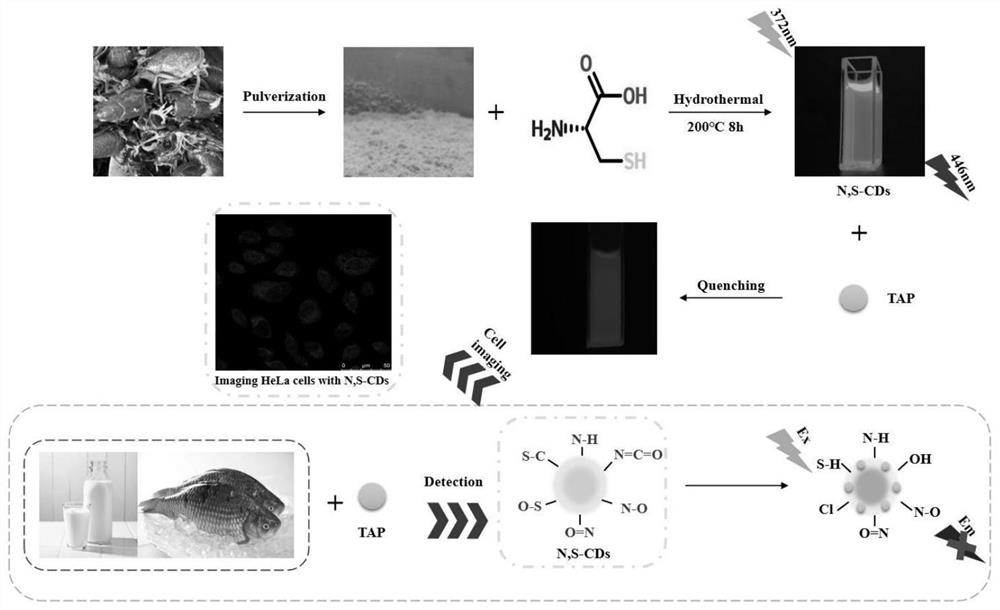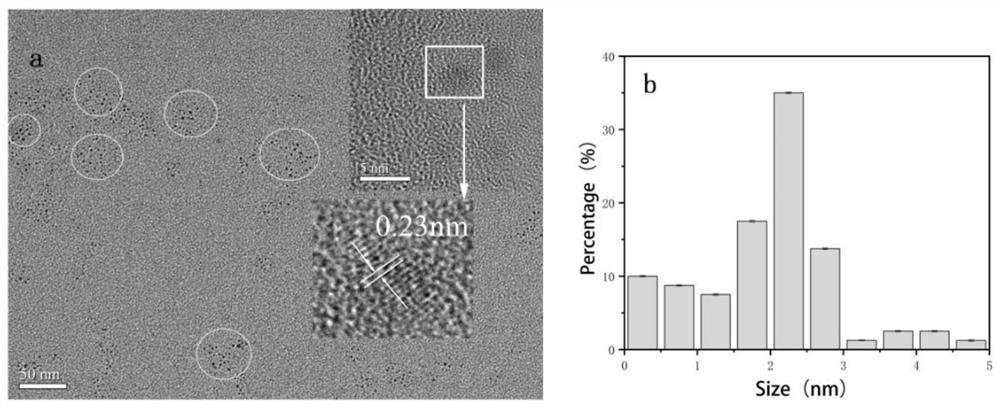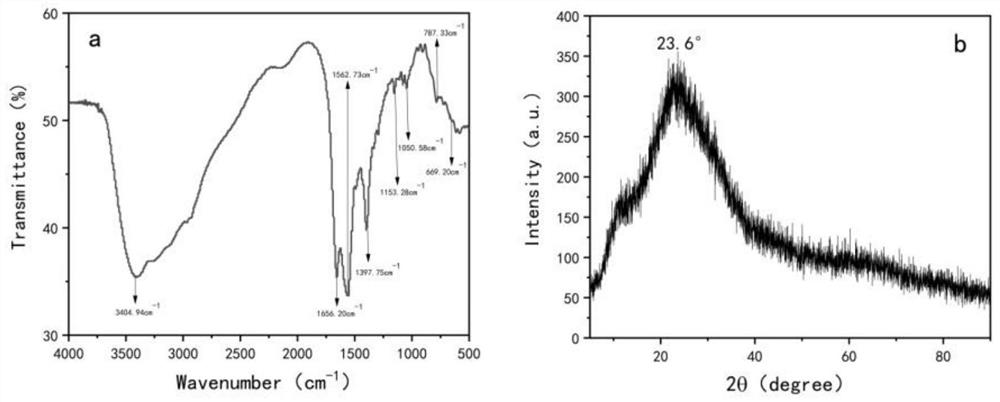A kind of carbon quantum dot fluorescent probe and method for detecting thiamphenicol content
A technology of thiamphenicol and carbon quantum dots, applied in fluorescence/phosphorescence, chemical instruments and methods, nano-carbon, etc., can solve the problem of little work in detecting TAP, achieve excellent selectivity, anti-interference ability, and sensitivity Detection limit, effect of good biocompatibility
- Summary
- Abstract
- Description
- Claims
- Application Information
AI Technical Summary
Problems solved by technology
Method used
Image
Examples
Embodiment 1
[0041] (1) Types and sources of raw materials
[0042] Crayfish shells were collected in the garbage of a restaurant in Changsha, China; reference drugs thiamphenicol (TAP), florfenicol (FF), chloramphenicol (CAP), amoxicillin (AMX), sulfonamides The drug (SDI), penicillin (PG), doxycycline hydrochloride (DOX), melamine (MEL) (98%), phenylindole (DAPI) and dimethyl sulfoxide (DMSO) are all produced by Shanghai Yuanye Biotechnology Ltd.; L-cysteine was purchased from Chengdu Kelong Chemical Reagent Co., Ltd.; BR buffer was H 3 PO 4 -HAc-H 3 BO 3 Mixed acid system; all reagents are of analytical grade and used without further purification. The Hela cell line was obtained from Shanghai Binxin Biotechnology Co., Ltd. (www.bio-nano.com). Ultrapure water (18.2 MΩ·cm) was produced by a Milli-Q ultrapure water system (Millipore, Burlington, MA, USA, www.millipore.com). The milk and fish samples were all from Ya'an Jixuan Supermarket.
[0043] (2) Synthesis of carbon quantum d...
PUM
| Property | Measurement | Unit |
|---|---|---|
| concentration | aaaaa | aaaaa |
| diameter | aaaaa | aaaaa |
Abstract
Description
Claims
Application Information
 Login to View More
Login to View More - R&D
- Intellectual Property
- Life Sciences
- Materials
- Tech Scout
- Unparalleled Data Quality
- Higher Quality Content
- 60% Fewer Hallucinations
Browse by: Latest US Patents, China's latest patents, Technical Efficacy Thesaurus, Application Domain, Technology Topic, Popular Technical Reports.
© 2025 PatSnap. All rights reserved.Legal|Privacy policy|Modern Slavery Act Transparency Statement|Sitemap|About US| Contact US: help@patsnap.com



